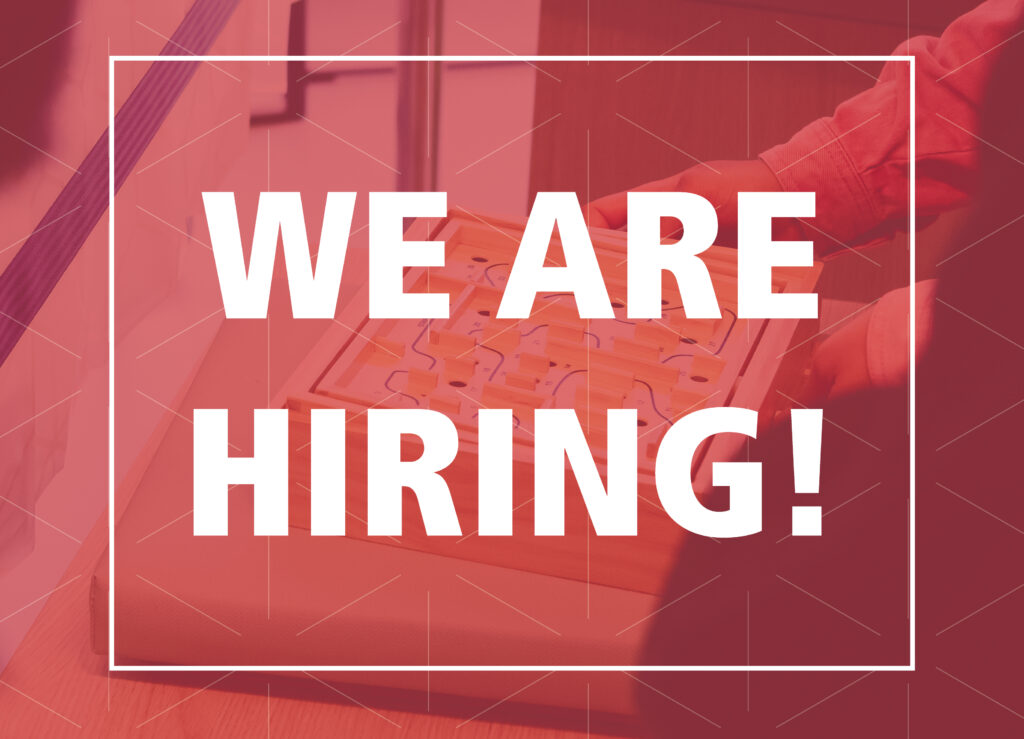Insight
A New Way to Think About Fashion as a Service (FaaS)
Not Function, but Fashion as a service.
In our project at Digital Society School (DSS), our team’s challenge is to create a tool that assists fashion companies to achieve more circular business models. We do this by reimagining their business models through the lens of data-enabled design and the required service systems. We want this project to contribute to a new collective understanding of fashion that is more circular, sustainable, inclusive, and digitally enabled.
But, before we explain how this tool works and how we apply gamification principles to it (see next headings), we need to provide some context by explaining what fashion as a service, or a sub-category of fashion is clothing a service, means. For this, let us consider the most common definition and look at some examples of companies and the fashion service they provide.
Definition — Clothing as a Service
Clothing as a Service (CaaS) refers to a distribution model in which clothing and accessories are provided to customers temporarily, often through rental or subscription. Read an Article from Vogue Business describing Clothing as a Service here.
Examples of companies related to CaaS
1. “Mud Jeans”
Mud Jeans is a denim company headquartered in Almere that works towards making one of the most polluting processes in the fashion industry more sustainable. Mud Jeans’ denim is made from recycled material (up to 40%!) from discarded/donated denim products. Moreover, they display a lot of circular fashion ideals in their projects such as pioneering Lease a jeans model in 2013.
Here’s a snippet from the Mud Jeans vision to explain why they do what they do:
“Why jeans? Well, jeans are one of the most polluting items in fashion. Using 7.000 litres of water and nasty chemicals. With over 200.000 million jeans being sold yearly, the impact of recycling jeans and using organic cotton can be huge.” (Source)
A new way of doing business
2. “Lena Fashion Library”
Lena Fashion Library is a concept “library” located in Amsterdam. At its core, it is a borrowing service, similar to book-based libraries, wherein customers opt into a monthly subscription which translates to points that can be used in exchange for clothing articles for a certain duration of time.
While the product offered by them is rental clothing, their circular service system built around borrowing is the reason it is a great example of a fashion service system since it works towards reducing overconsumption of clothing. Moreover, this enterprise is an important example to us as they believe in a circular fashion and promote sustainability by weaving the ideas into their core business model. (Source)
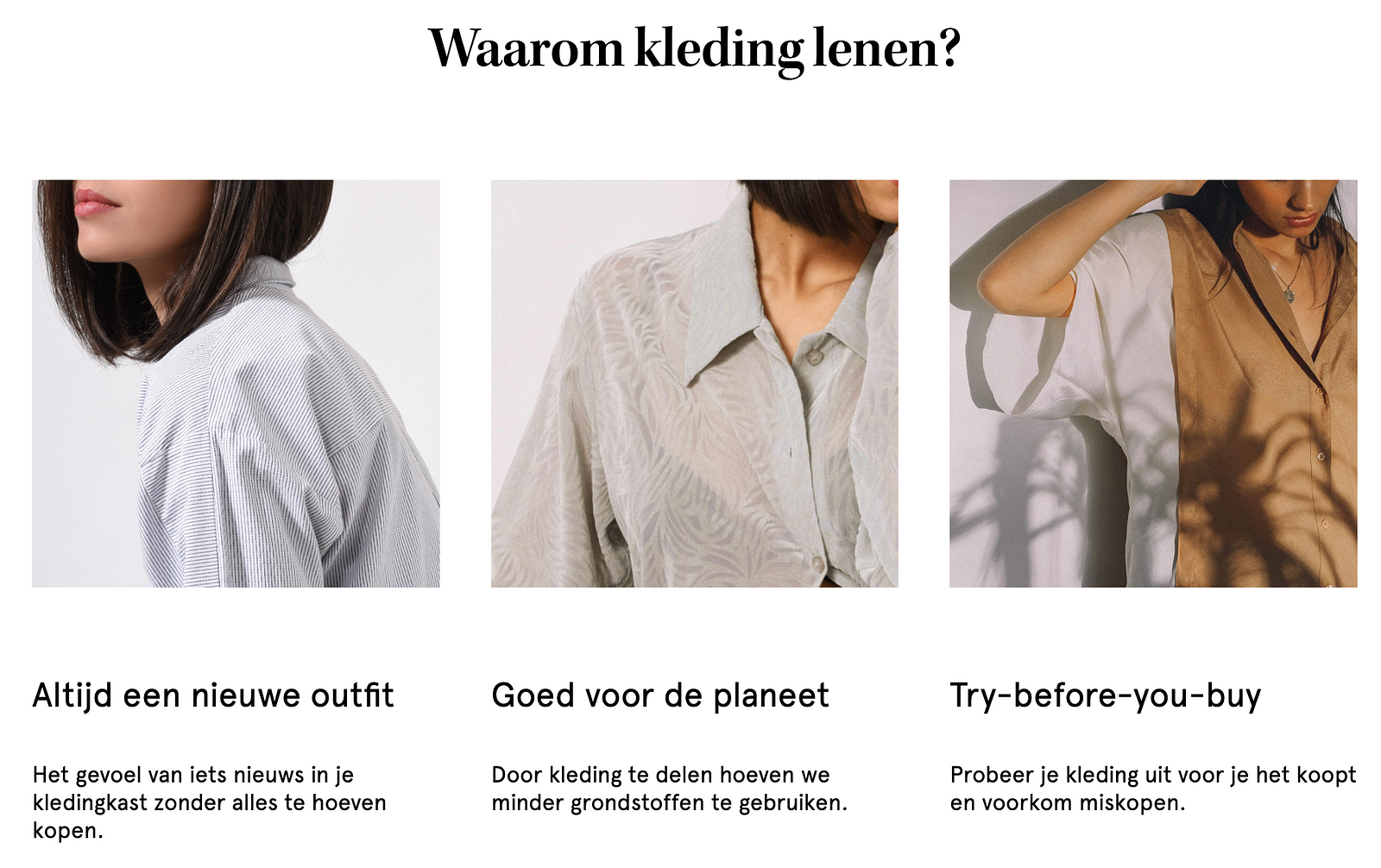
What if fashion became personal again?
Before the introduction of mass-manufactured and standard-sized clothing, the clothes we wore were tailor-made to fit us. We also did not have as much clothing in our closet as we do now which, depending on how you look at it, can be either good or bad: less negative impact and less choice. In the online domain where companies are hoarding our data and creating customer profiles (see our previous blog), almost every online service is doing some kind of tailoring for their users. The ads you see on Instagram are already ultra-personalized. Spotify’s recommended weekly is an ultra-personal playlist. But is fashion already there? You might get shopping recommendations but the clothes themselves are not made specifically for you.
Now that we understand CaaS, and the need for fashion to be personalized, let’s look at some companies who are already making a move towards more individualized clothing:
1. “THE NORTH FACE LAB 141 CUSTOMS”
— Customize cloth and match it to a user’s body size
141 Customs and The North Face Lab Purple Label have come together to provide Japanese consumers with the chance to create and customize their very own jackets. Customers can customize the body colors, fasteners, emblems, and body details such as the cuffs. From there, clients can reserve an in-store space for when they will need to visit The North Face Lab for a 3D body scan, which enables 141 Customs to gather information about your unique body shape and fitting requirements. (source)
2. “MTailor”
— Size Personalization Through Mobile Phone App
MTailor’s technology will measure customers directly from its app to guarantee that their clothes are made to their exact measurements. MTailor brought in 4 professional tailors and 35 people and went head-to-head against them taking body measurements. It was revealed to be 20% more accurate. The unique measurement app takes 16 measurements across the whole body to ensure that every piece of clothing is a perfect fit.
Circular Business Models 101: Create a service system
An Ultra Personalized Product Service System is a new and potentially more sustainable way of producing products. In this case, a product is sold as a service rather than just an object to their customers. This means that the company retains ownership over the materials and has an incentive to recirculate them. Governments are increasingly passing new laws that put pressure on companies to change, for example by requiring stricter repair policies (Source). This is further driving this change in the industry.
Here is a quote from the Ellen Mac Arthur foundation that aligns with our vision for circular fashion:
“A circular economy for fashion creates better products and services for customers, contributes to a resilient and thriving fashion industry, and regenerates the environment. It prioritises the rights and equity of everyone involved in the fashion industry and will create new opportunities for growth that are distributed, diverse, and inclusive.”
Turning a product into service requires a more complex variety of stakeholders and web of communications. For example, reverse logistics is one of the concepts to crack in getting materials back from customers to the original producers. It comprises the sector of supply chains that processes anything returning inwards through the supply chain or traveling ‘backward’ through the supply chain. Though it has long been a neglected area, growing market pressures, such as online retail and customer expectations, are increasing the strain on this area of supply chains. (source)
The question is whether the large fashion market incumbents will innovate in this area. More likely, it will be up to start-ups to create this technological disruption. When looking at the players in the fashion market it helps to make a division into three categories: Fast Fashion, Premium Brands, and Luxury clothing. What sets these categories apart is the pricing of the products. In each of these three categories, there is waste throughout the whole value chain. The cheaper the product, the more often costs are externalized by way of water waste, electrical and transport waste, exploitative labor conditions, low recyclability of used clothing, etc.
In this context, Franch adopted the anti-waste law in 2020 that will also require fashion manufacturers, distributors, and stores with unsold inventory to donate or recycle it instead of incinerating it or putting it in a landfill. (source)
Therefore, changing the fashion industry requires us to look critically at the business models, and those are all centered around design.
The next business canvas for FaaS
The business model canvas, originally released by Osterwalder in 2008, is the prime example of business modeling and many derivatives of this canvas have been made such as the lean start-up canvas or the sustainable business model canvas. This kind of business modeling or “canvassing” has become broadly accepted as a business development method.
The starting point for our project is the ultra-personalized product-service system (UPPSS) canvas created by Troy Nachtigall. Rather than offering a snapshot of the company at large, which is what the original business model canvas does, Nachtigall’s canvas centers around the design or the product and it is intended to be used more dynamically. It facilitates the creation of a service system by looping through four distinct phases of the product service. This helps the company identify the ways that communication and data should flow between different stakeholders.
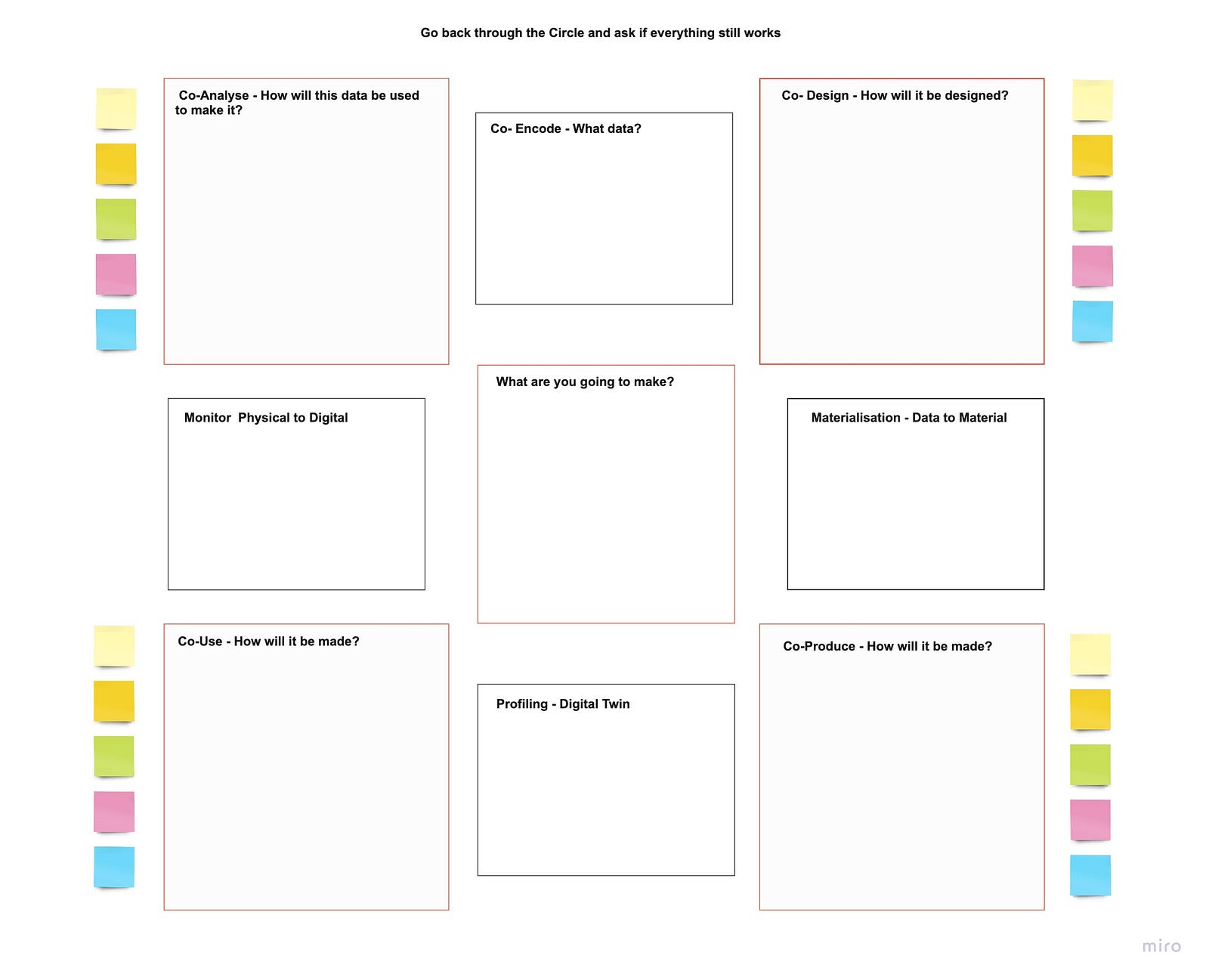
The initial version of the canvas
Until now, this method has been used for an ultra-personalized shoe service and understanding the data flow required to build such a system. Our assignment is to try out the canvas for many more products and see how well it generalizes to different categories of data-enabled design.
Time to experiment with gamification
In the coming months, our team will be trying out this canvas with a selection of different types of businesses to find out the particulars of how it is best used. This will involve the facilitation of various co-creation sessions with company stakeholders and researching the value that these organizations get out of it.
In this process, we are finding out how to best create the supporting materials such as guidebooks, info videos, and physical as well as digital materials such as the canvas layouts and boards that might be needed.
We are taking inspiration from other business tools such as “In the Loop: Circular Business Card Deck”, which uses principles of gamification to facilitate thinking through design strategies and solutions.
The knowledge and materials we create will allow us, in the end, to train and inform business people and organizations such as the consulting firm Circle Economy to facilitate sessions using this canvas.
Workshops to test and evaluate the canvas
|Our first trial with 3D Knit Lab
Troy Nachtigall and Lorenzo Masini, from the 3D Knit Feild Lab at the HvA, have approached DSS with this challenge. In their previous projects, they had made a Mural canvas, for 3D-printed shoes. Our project eventually will follow a similar route; however, the canvas will be made in relation to Knitwear (think the woven material used for sweaters, t-shirts, pants, etc).
The process for making 3D knitted garments works in the following way: First, a user wishes to buy a super personalized garment, that fits them exactly right. To do this, they create a body scan, using a 3D scanner. The resulting 3D model of their body is then used by the fashion company to derive measurements and custom build a knitted garment that will fit the unique individuals’ proportions.
|Quick look into our game with Robot Lab
To test out our latest version of the tool, we planned a testing round with the RobotLab.
The Robot Lab is an initiative of the Digital Production Research Group (DPRG) of the HvA that investigates how advanced productions methods can be used to address societal issues. In Robot Lab, ideas on how to create new applications for residual woods are developed. In this department, robots are used to sort the residual woods according to different metrics like size and wood quality in order to use them again in computationally optimized designs.
We prepared this testing round for Robot Lab by dividing important facilitation tasks between our group: Dilara and Bambo were the storytellers who were asking questions to prompt the participants. Subu was the tracker and timer. Natch was the observer who analyzed the behavior or ‘gameplay’ of the participants.
We simplified the UPPSS canvas by taking out the co-encode, materialization, profiling, and monitor boxes and played it in 3 levels. The firstly level is the User Level, secondly the Company Level, and lastly the Data Level. At each level, the participants have to generate ideas from that level’s perspective. Our game canvas had 4 boxes Co-Analyse, Co-Design, Co-Produce, and Co-use. In each box, we asked the participants questions to support their brainstorming. After the session, we summarized our insights and digitized the canvas. We sent our analysis and feedback document to Robot Lab. We believe that our view as outsiders helps the company identify blindspots in this way.
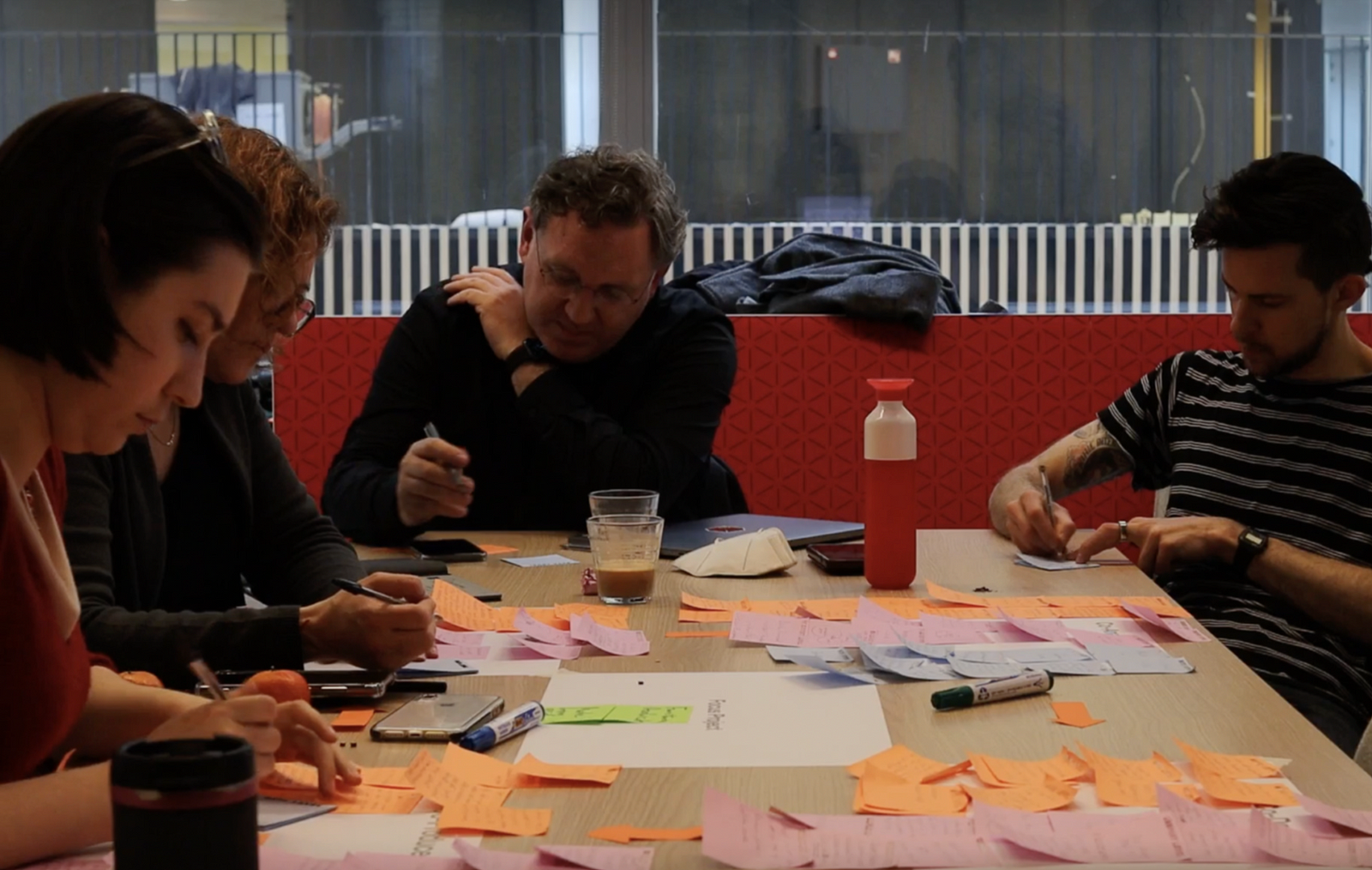
The workshop with RobotLab
Next steps: Spread the word and test this thing with us! 🤗
What we will do next is improve the use of the canvas in these kinds of sessions by applying gamification principles while also reaching out to other product-service-focused companies. For inspiration, we keep on looking for and playing games about sustainability and circularity (and some Dungeons and Dragons).
Please get in touch with us if you know any companies (especially startups) that might benefit from applying these business modeling methods or organizations that could be intermediaries that could use the tool with these companies.
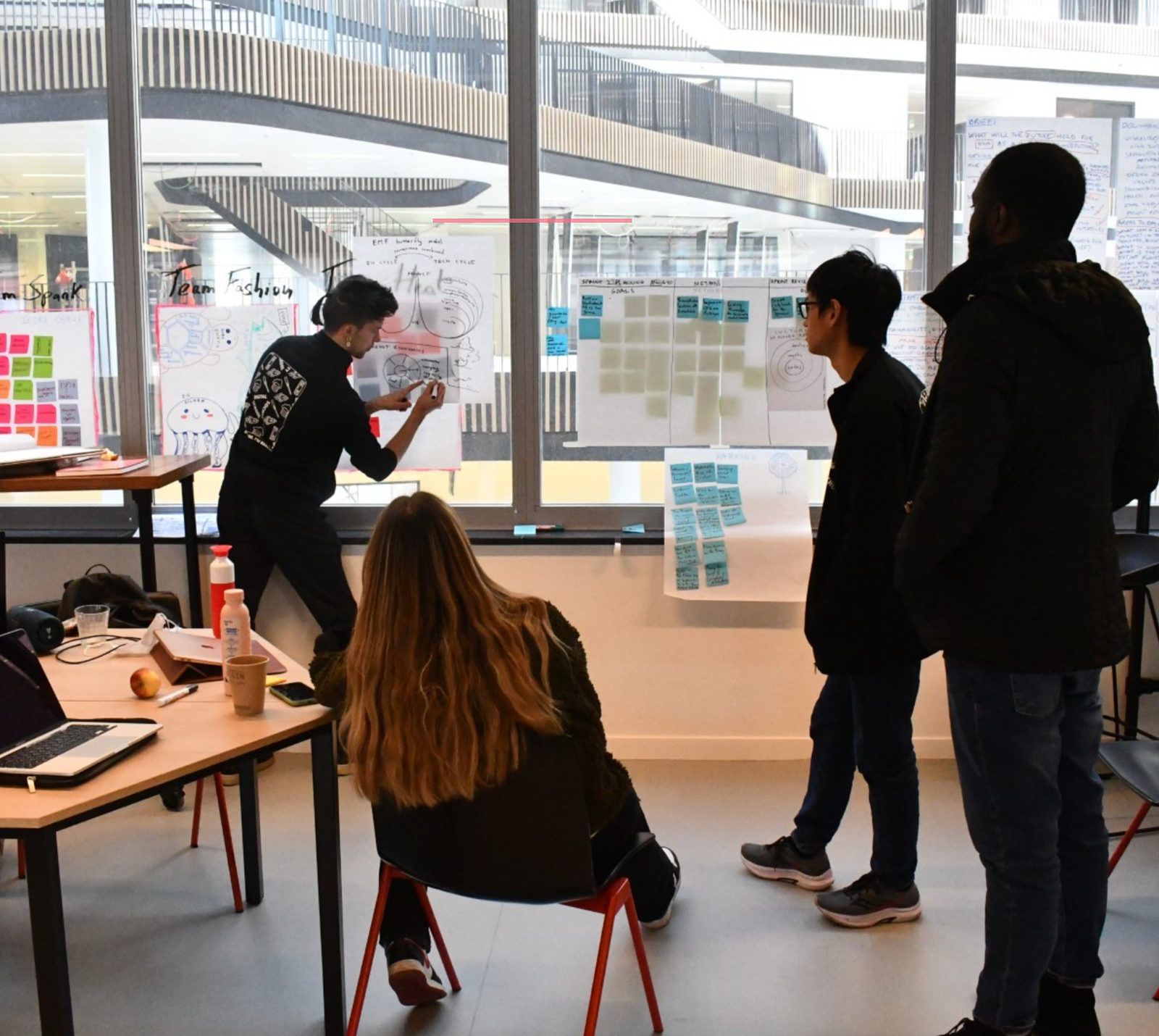
What have we done so far?
1.“Bambo presenting about fashion”

2.“Visiting the 3-d knit machine”
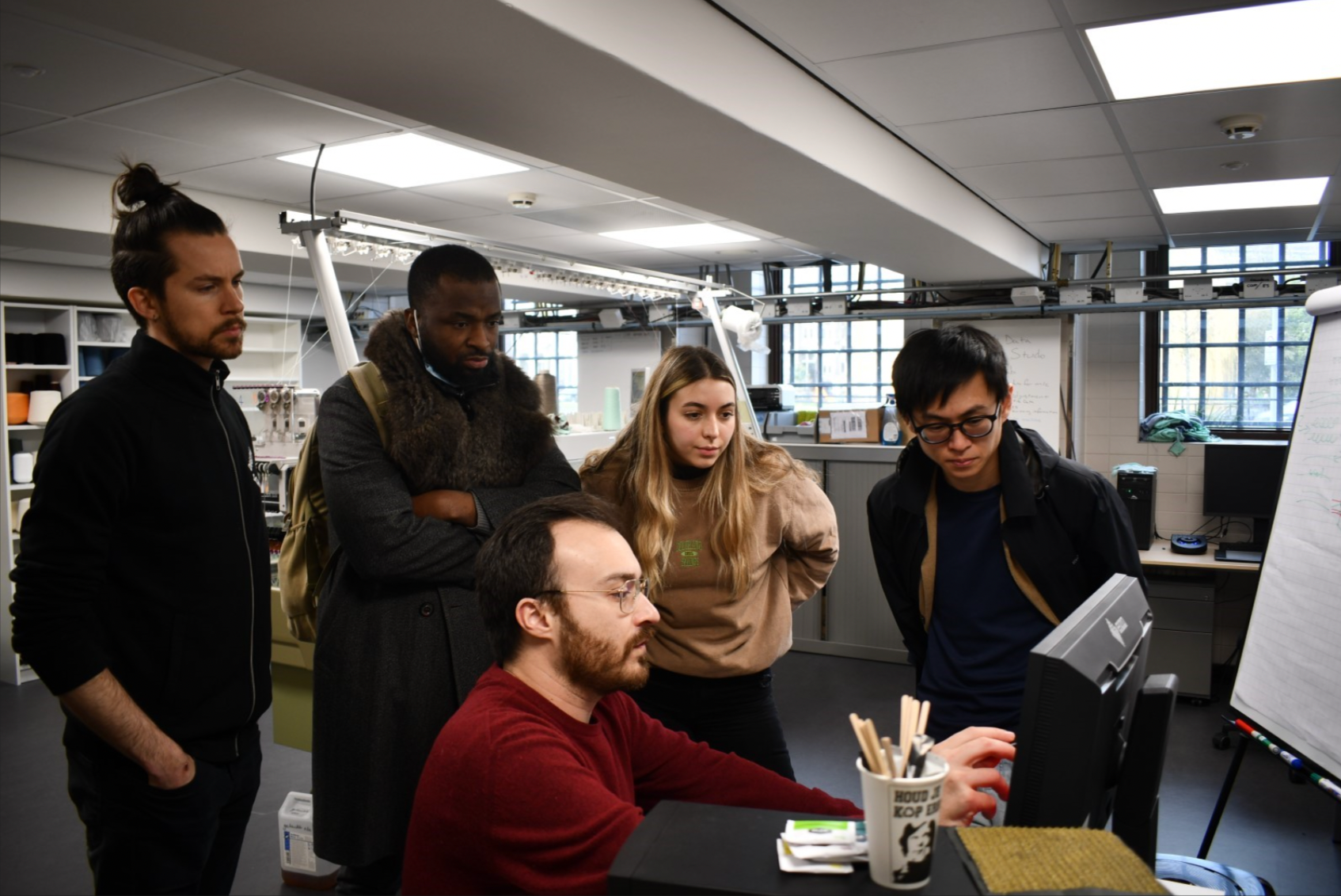
3.“Playing UPPSS game”
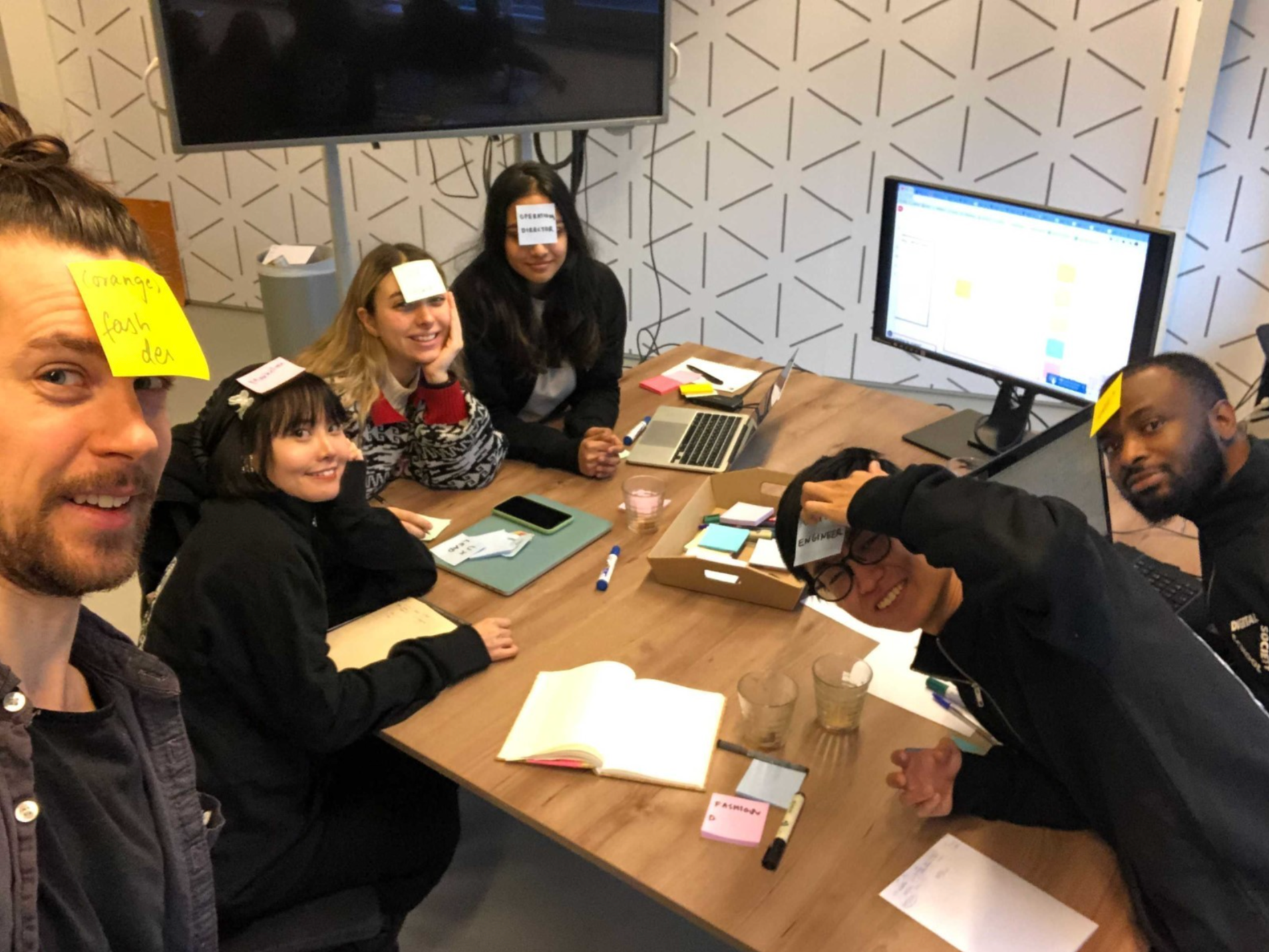
4.”Defining our target audience”
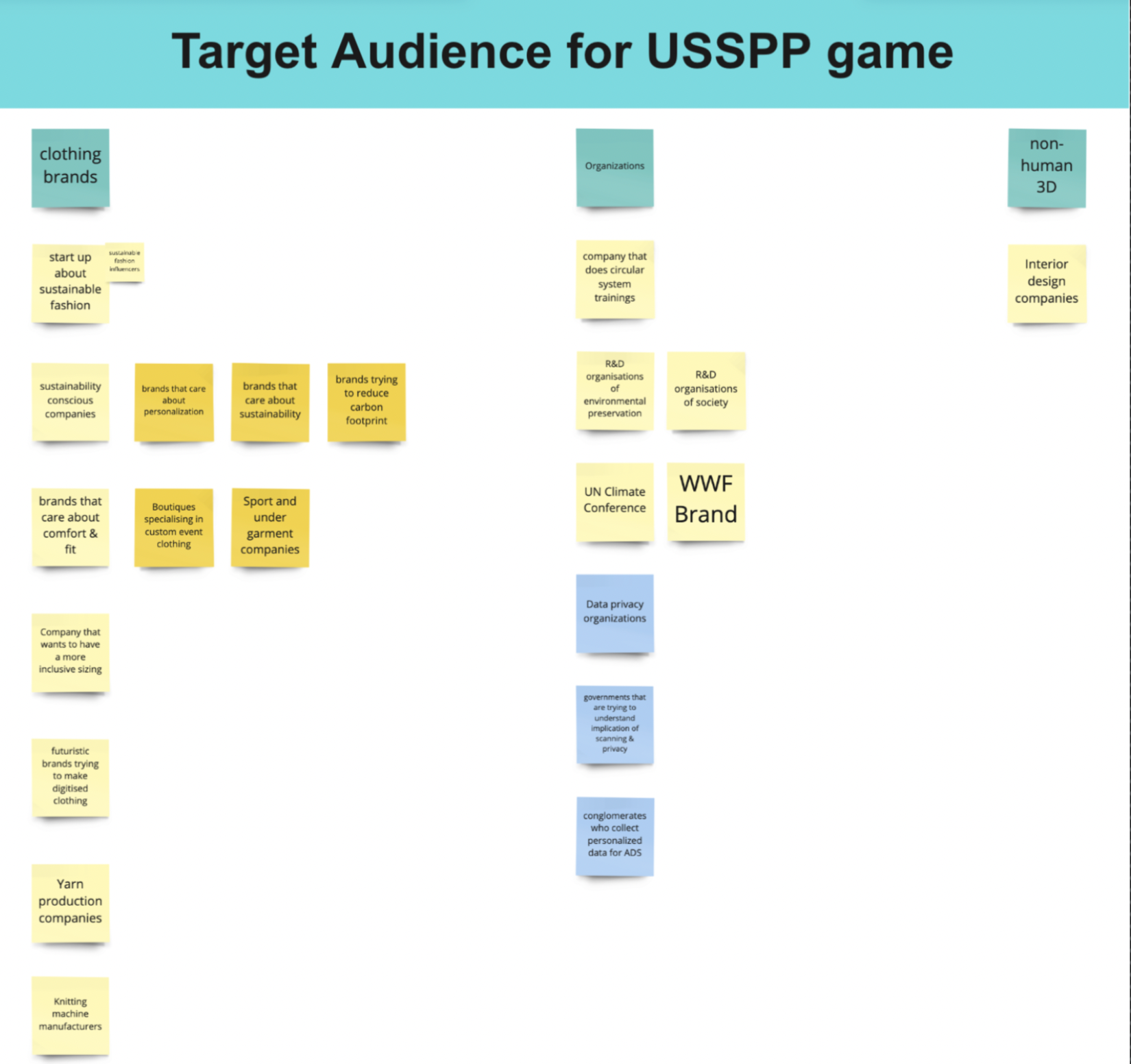
5.”Creating a business model canvas as a 3d knit sweater company”
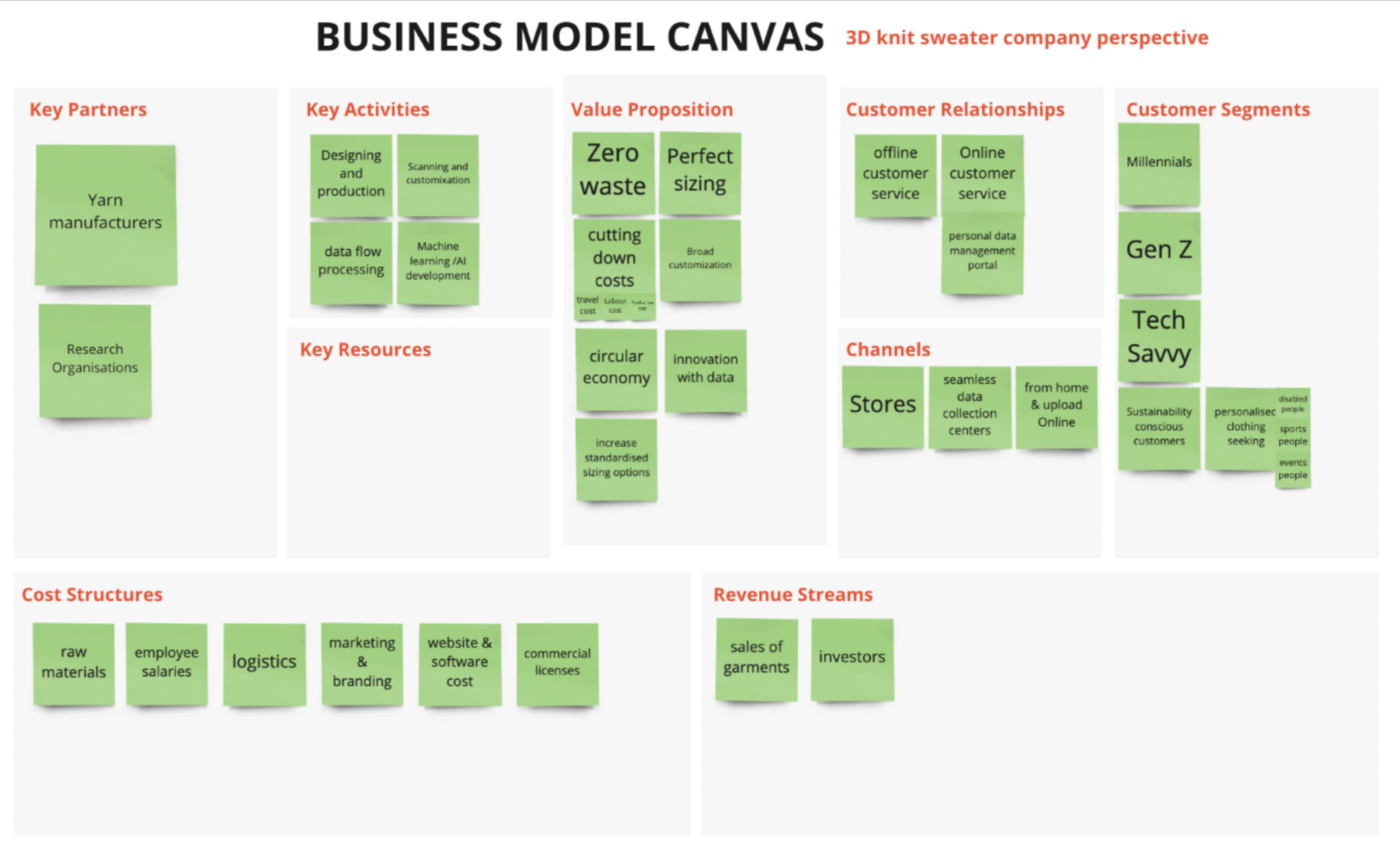
6.”Visiting Fashion for Good Museum”
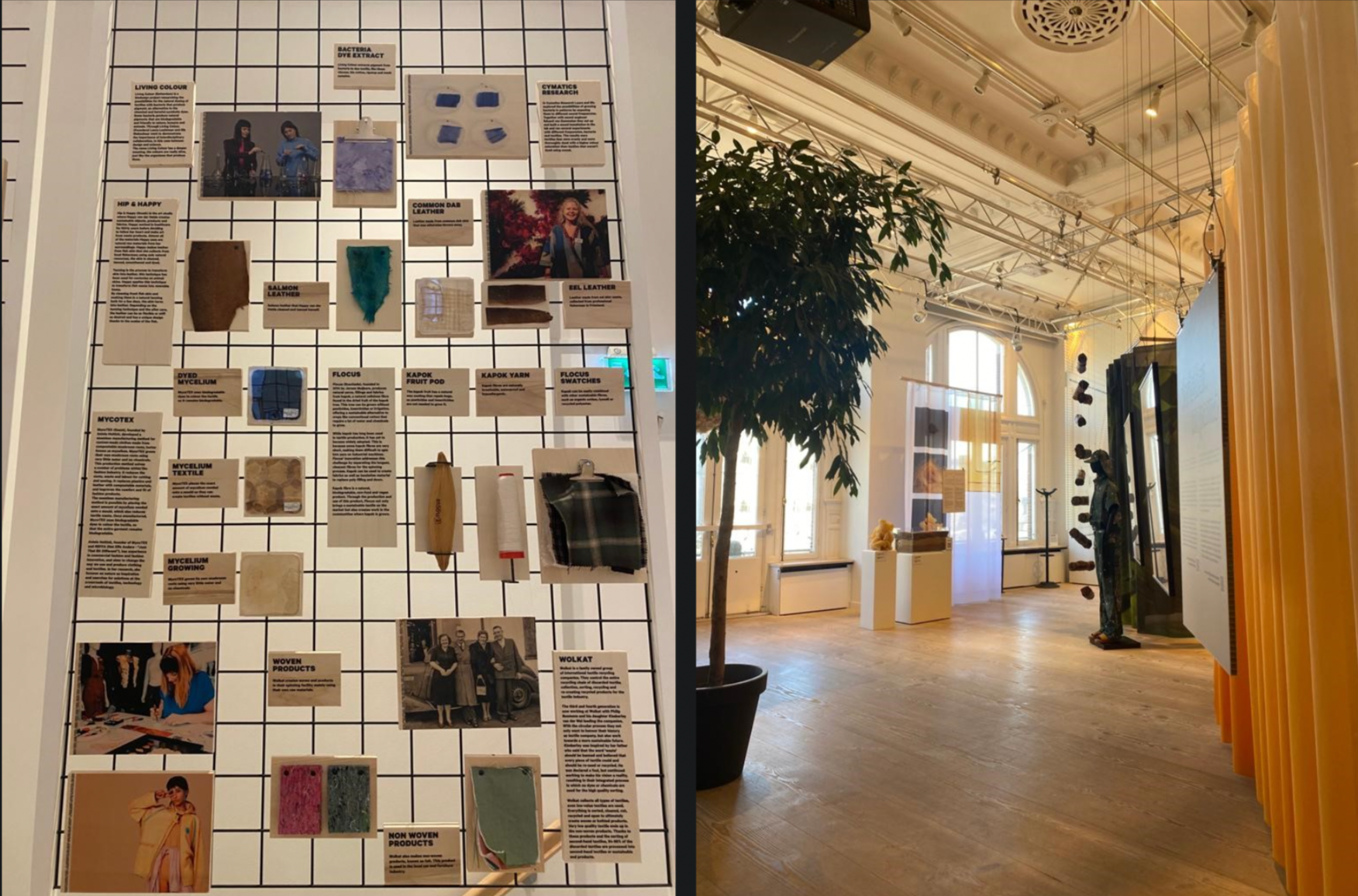
7.”Simplifying the canvas and separating post-it for each level”
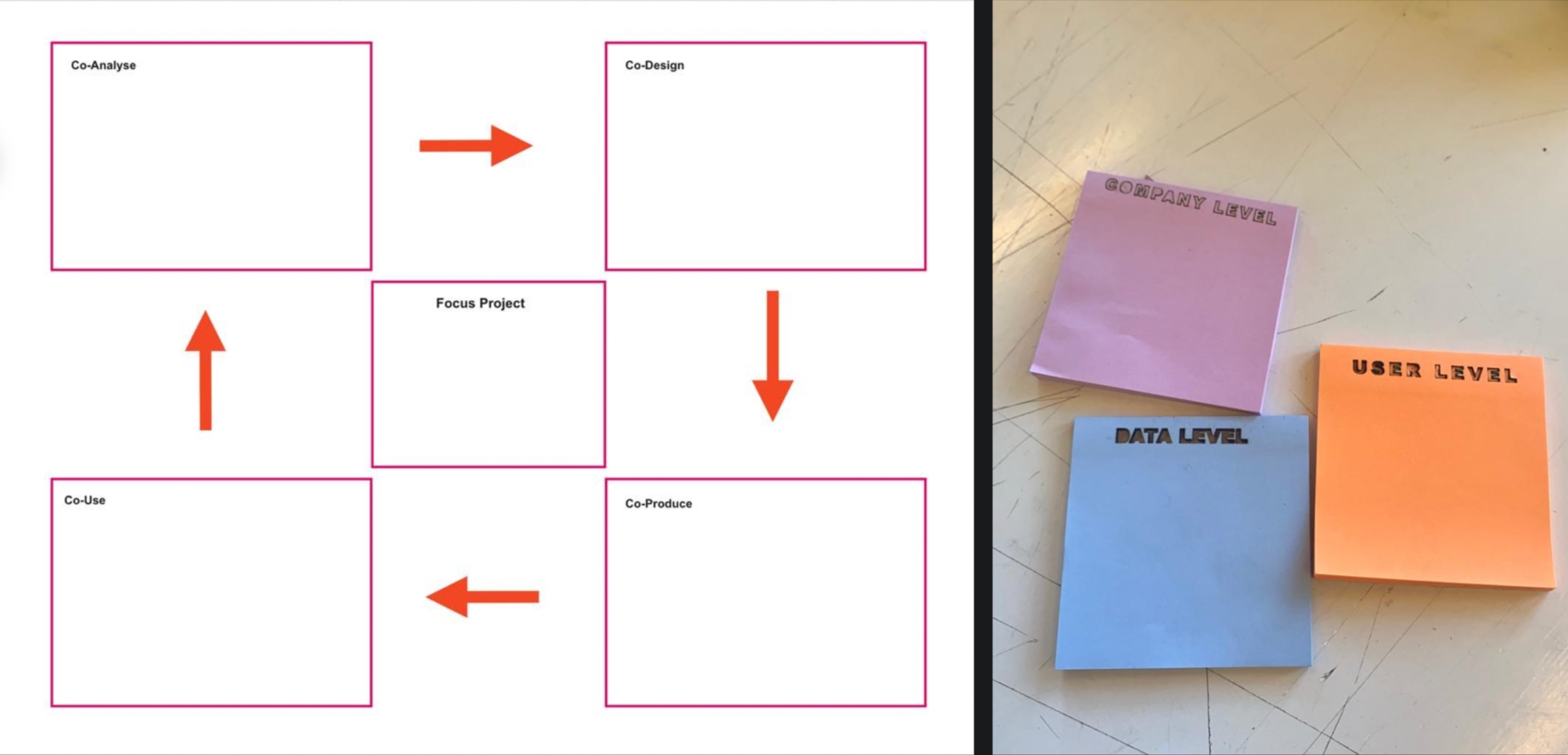
Our Partners
The partner of this project is Research Group: Fashion Research & Technology. This research group is part of the Faculty of Digital Media and Creative Industry (FDMCI) and works closely with Amsterdam Fashion Institute (AMFI). The following two researchers in the group are our partners: Troy Nachtigal, Head of Fashion Tech, and Lorenzo Massini, Design Researcher at Fashion Tech.
Troy has been interested in making fashion with data as a material. He believes that he can critically create for everyone, no matter what shape, size or color also insists that data is key to the digital transformation of fashion, meaning new craftsmanship is also required. (Troy, Data as a material for fashion: Fashion Research & Technology, 14 Sep 2021). In his previous research, he and his design team created a pair of ultra-personalized high heel shoes for a single user by scanning the user’s feet in multiple positions.
- SmaSurf クイック検索



